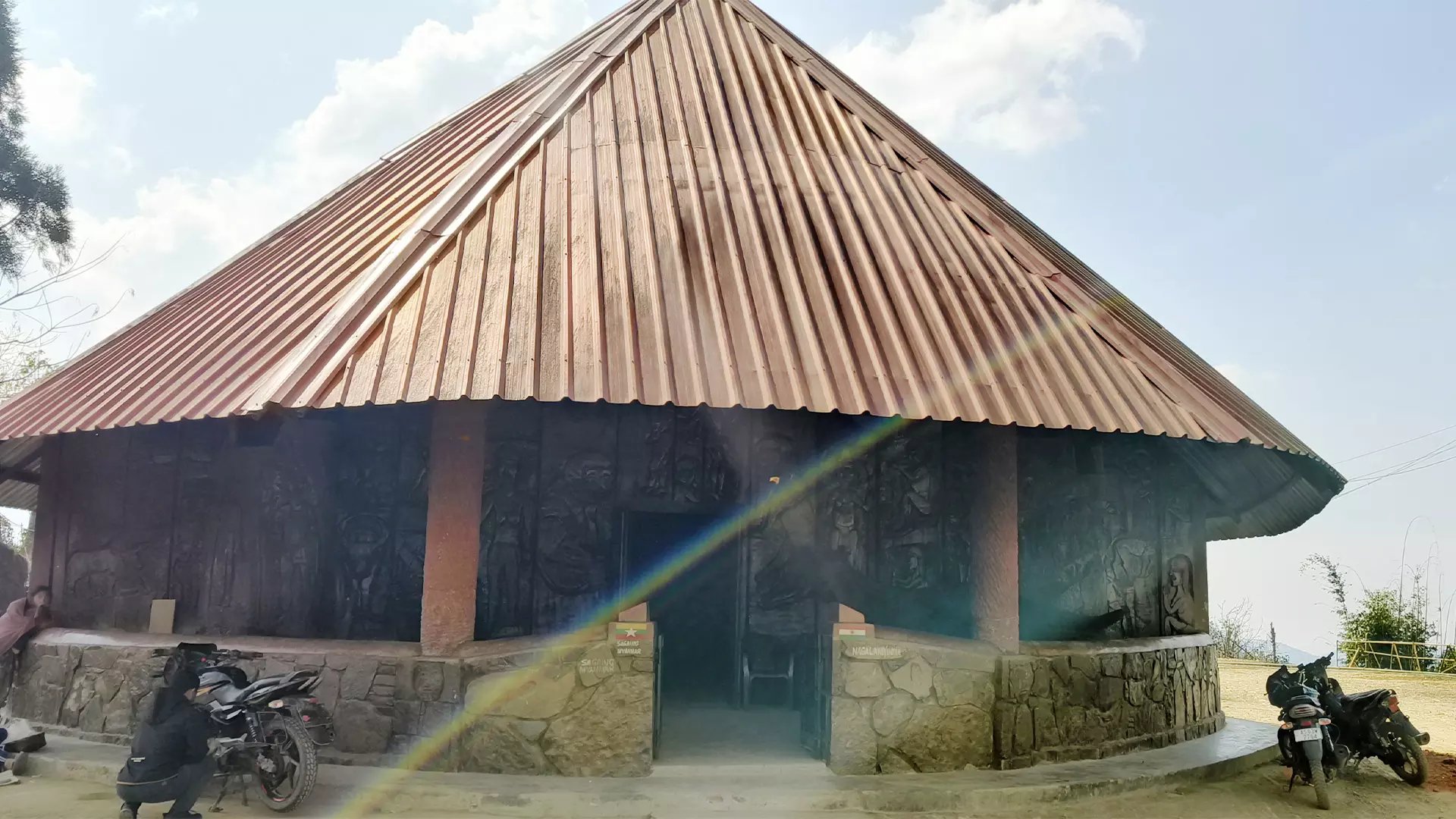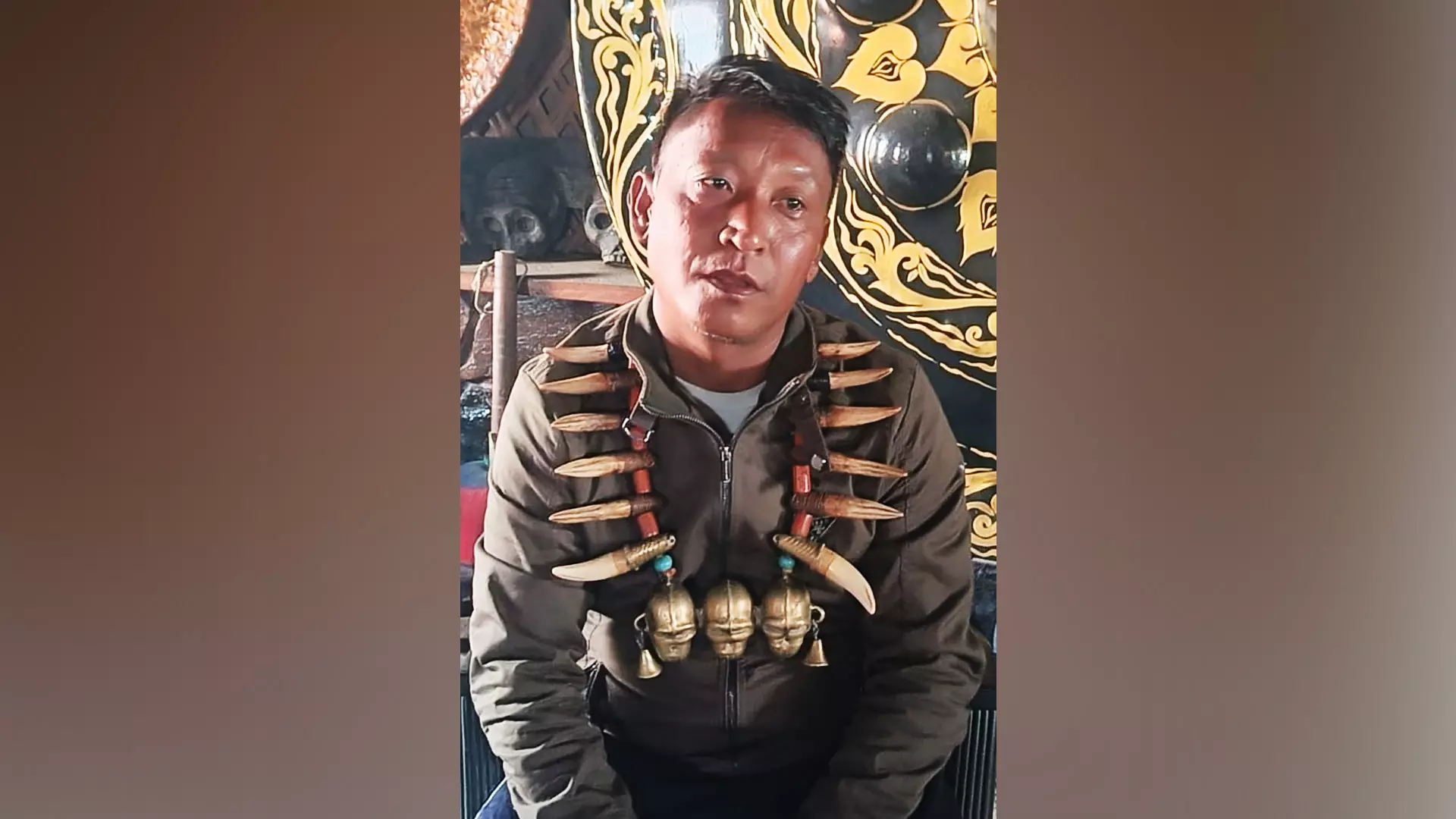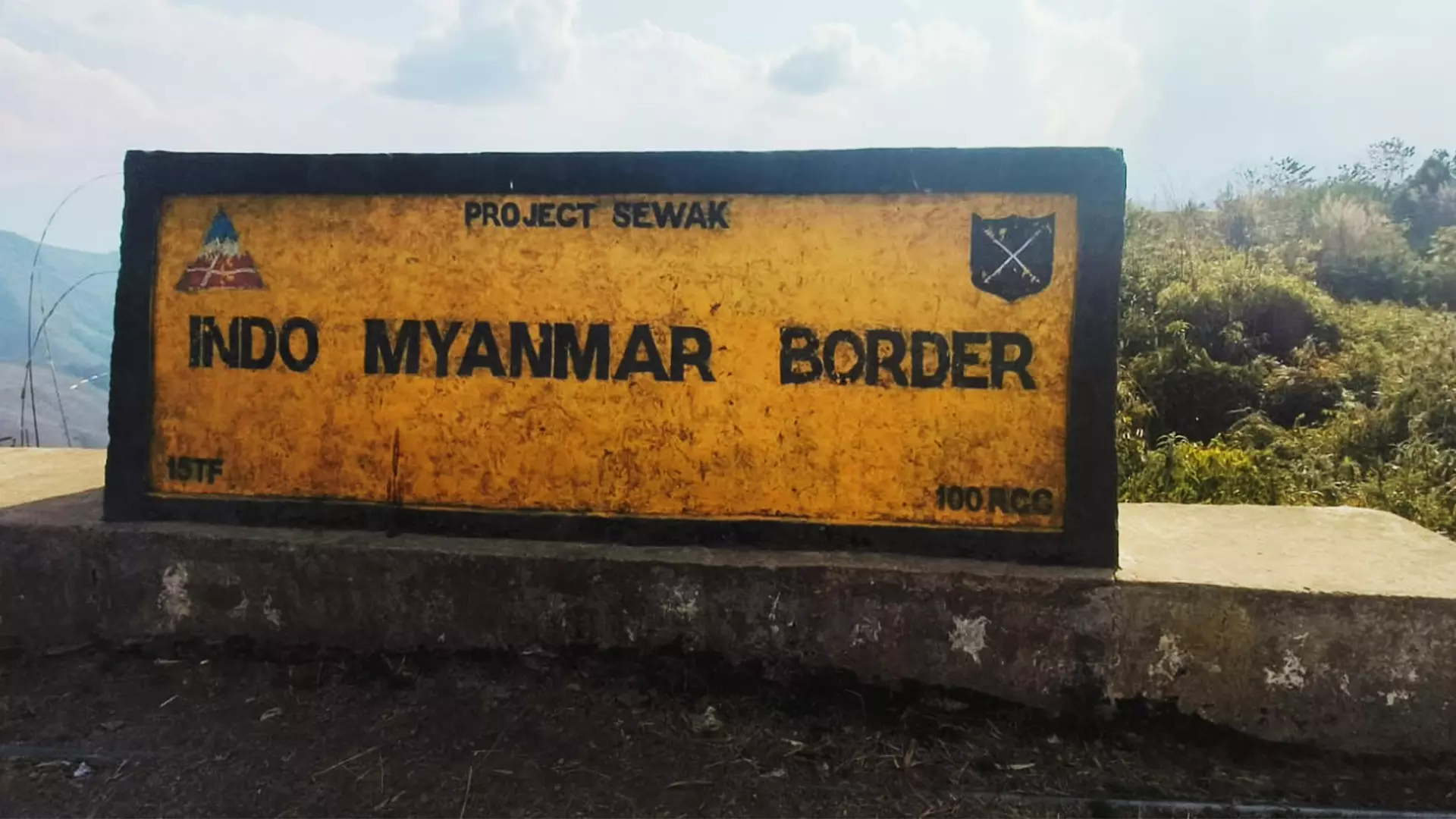
- Home
- India
- World
- Premium
- THE FEDERAL SPECIAL
- Analysis
- States
- Perspective
- Videos
- Sports
- Education
- Entertainment
- Elections
- Features
- Health
- Business
- Series
- In memoriam: Sheikh Mujibur Rahman
- Bishnoi's Men
- NEET TANGLE
- Economy Series
- Earth Day
- Kashmir’s Frozen Turbulence
- India@75
- The legend of Ramjanmabhoomi
- Liberalisation@30
- How to tame a dragon
- Celebrating biodiversity
- Farm Matters
- 50 days of solitude
- Bringing Migrants Home
- Budget 2020
- Jharkhand Votes
- The Federal Investigates
- The Federal Impact
- Vanishing Sand
- Gandhi @ 150
- Andhra Today
- Field report
- Operation Gulmarg
- Pandemic @1 Mn in India
- The Federal Year-End
- The Zero Year
- Science
- Brand studio
- Newsletter
- Elections 2024
- Events
Bedroom in India, kitchen in Myanmar: What the fencing of 1,643 km Indo-Myanmar border will tear apart

Tonyei Phawang, the 45-year-old angh (traditional leader) literally sleeps in India but eats in Myanmar. He is therefore unhappy with the Union government’s decision to fence the 1,643-kilometre-long India Myanmar border and end the Free Movement Regime (FMR) which allows people of the two countries access into each other’s territories.“I am unhappy with the decision to fence the 1,643...
Tonyei Phawang, the 45-year-old angh (traditional leader) literally sleeps in India but eats in Myanmar. He is therefore unhappy with the Union government’s decision to fence the 1,643-kilometre-long India Myanmar border and end the Free Movement Regime (FMR) which allows people of the two countries access into each other’s territories.
“I am unhappy with the decision to fence the 1,643 km border with Myanmar and oppose the scrapping of FMR. If the border between India and Myanmar is fenced, then our people will face problems because most of our relatives stay on the Myanmar side. Our people are not happy with the decision and urge the Centre government to rethink it,” Phawang, the 10th angh of Nagaland’s Longwa village, told The Federal. Phawang’s influence runs across the village.
Phawang’s own house in Longwa, perched at a height of about 5,000 feet above sea level, is divided between the two countries.

Tonyei Phawang's Nagaland house, whose bedroom is in India and kitchen falls in Myanmar. Photos: Avik Chakraborty
The India-Myanmar border divides the angh’s house into two halves. The left side of the entry gate to the house has Myanmar’s flag painted and Sagaing written on it, while the right gate has Nagaland written with the flag of India.
“Our family settled here in the 16th century. Ten generations have spent their lives in this place. Now, they are trying to divide us into two parts by erecting a fence on the border. My house is located midway between the borders of the two countries. The bedroom where I sleep is in India and half of our kitchen is in Myanmar,” he said.
According to Phawang, Longwa village came into existence in the 16th century, but it was only during the 20th century (1970-71) that India and Myanmar jointly demarcated the boundary line. This is how the village got divided between the two countries.

Forty-five-year-old angh Tonyei Phawang.
“The boundary demarcation was done without any consideration or understating of the village. Once the people got to know about the move, they rejected it outright,” he said.
The indivisible divides
With a population of 6,700 people, about 20 kilometres of the international border between the two countries runs through Longwa. People of Longwa village have dual citizenship. Interestingly, nearly, 3,500 voters in Longwa cast their votes in Phomching assembly of Nagaland, while 1,300 people vote in Myanmar’s Yochen Lahe.
Phawang’s administration includes 33 villages of Myanmar, five villages of Nagaland and seven villages of Arunachal Pradesh. One has to walk for hours to reach these small villages on the slopes of the mountains.
Four northeastern states share their borders with Myanmar, running into 1,643 kilometres, of which 215 kilometres is along Nagaland, 520 kilometres is along Arunachal Pradesh, 510 kilometres along Mizoram and 398 is shared with Manipur.

Shared lives
People in the village of Longwa belong to the Konyak tribe, spread across the mountains of India and Myanmar. The history of the tribe is more than 600 years old and so had been their free movement across the two countries.
People of Konyak tribe are known as head hunters because the tribe has a tradition of cutting off the heads of enemies and hanging them on the walls of their houses. However, with the arrival of Christian missionaries in the 19th century, the custom of head hunting was banned.
After the formation of Myanmar, in 1950, people were allowed to move without restriction up to 40 kilometres on both sides of the border, but later this was reduced to 16 kilometres.
Longwa has eight jhum farmlands and two forest reserves in total, out of which four jhum farmlands and one forest reserve fall under the territory of Myanmar.
Thirty-four-year-old Mentoh Konyak, who had just returned from his farm about three kilometres away on the Myanmar side, said, “Our house is on the Indian side and the farm is in Myanmar. We can easily go to Myanmar side and return back to India because of old relations on both sides. Konyak Naga people have been living like this for hundreds of years. Earlier, our grandfathers and great grandfathers used to do farming, now we are doing it. Life depends on farming. If fencing is put up on the border, then both our fields and kinship will be destroyed.”
The ground for fencing
While the demand for fencing the border has been an old one, it caught greater attention after the military coup in Myanmar in February 2021 and the ongoing ethnic violence in Manipur, which sparked off on May 3, 2023. It is the Manipur government that had raised the demand for fencing the entire India-Myanmar border.
Manipur government on several occasions has been citing alleged infiltration from Myanmar as the reason behind the ongoing violence in the state. Additionally, in the last three-four years, drugs and weapons worth thousands of crores brought from across the border have been seized.
N Biren, the Chief Minister of Manipur, has been urging the central government to put an end to the FMR. The state government claims that illegal immigrants, drug traffickers, and insurgents from Myanmar have been misusing the liberty granted under FMR. These insurgents then cross to Manipur and create turbulence.
Five districts of Manipur namely Chandel, Tengnoupal, Kamjong, Ukhrul and Churachandpur share their border with Myanmar. There are many villages like Zokhawthar, and Farkawan in Champhai district of Mizoram where people have been entering from Myanmar side. People from local tribes also come and go on both sides from the Pangsau Pass in Arunachal Pradesh.
Manipur is the first state where fencing work has been completed for a distance of 10 kilometres near the border town of Moreh.
The opposition
But people are opposing the move citing a loss of land and livelihood.
“We oppose the Centre’s decision to scrap the FMR and border fencing with Myanmar. Most of our cropland is under Myanmar territory, if the border is fenced then the people will lose their farmland and livelihood. The people who are on the Myanmar side are our Konyak people and we have a cultural linkage and if the border is fenced, we will have problems,” Manom Taiwangshu, general secretary Longwa Students Union, said.
“FMR had permitted the tribes living on either side of the border to traverse up to 16 kilometre into each other's territories without requiring a visa or passport, fostering social and cultural ties but now the government has decided to scrap FMR. How can the Centre take such a decision without consulting us? We oppose such moves from the government and warn them that if they try to forcefully fence the border, then the situation will be different,” Taiwangshu said.
Talking to The Federal, Yanlang Konyak, chairman of Longwa village said, “We have no problem in Longwa. No illegal intrusion has taken place in our village. Our village should be left out from border fencing because we have no problem. Our people are peaceful and leading a simple life. We reject the centre decision of fencing the whole border.”
“If the border is fenced then our people will lose the access to their fields in Myanmar. As of now, we can easily go to the neighbouring country work in our farmland or attend family functions and return peacefully,” Konyak said.

At least eight Naga tribes living in both India and Myanmar share close ties, speak the same language and have the same culture. Seven years ago, when Myanmar decided to fence the border at Pangsha in Nagaland’s Noklak district, both the people of the state and the state government opposed it. Myanmar dropped its plans following New Delhi’s intervention.
“India-Myanmar border is a unique challenge for security. But installing fencing on this rugged area is not such an easy task because of its geographical topography. The border of this area is as complex and full of challenges. The areas with the most difficulty are in Nagaland and Arunachal Pradesh. Because the border here passes through rugged, mountainous and dense forest areas. There are some areas where the road has not yet reached. It sometimes takes several days for the security forces to reach the border from their post. Even if the fencing work is completed in some selected areas, it is to be monitored. A large number of troops will be required for this,” said Rupak Bhattacharjee, independent public and foreign policy analyst based in Northeast India.
Nagaland Chief Minister Neiphiu Rio on January 26 said the decision of the Centre to fence the India-Myanmar border needs through discussion before being implemented.
“If the need be then we have to work out a formula on how to solve the issue for the people and prevent infiltration as well, because Nagaland is bordered by Myanmar, and on both sides there are Nagas," he said.
